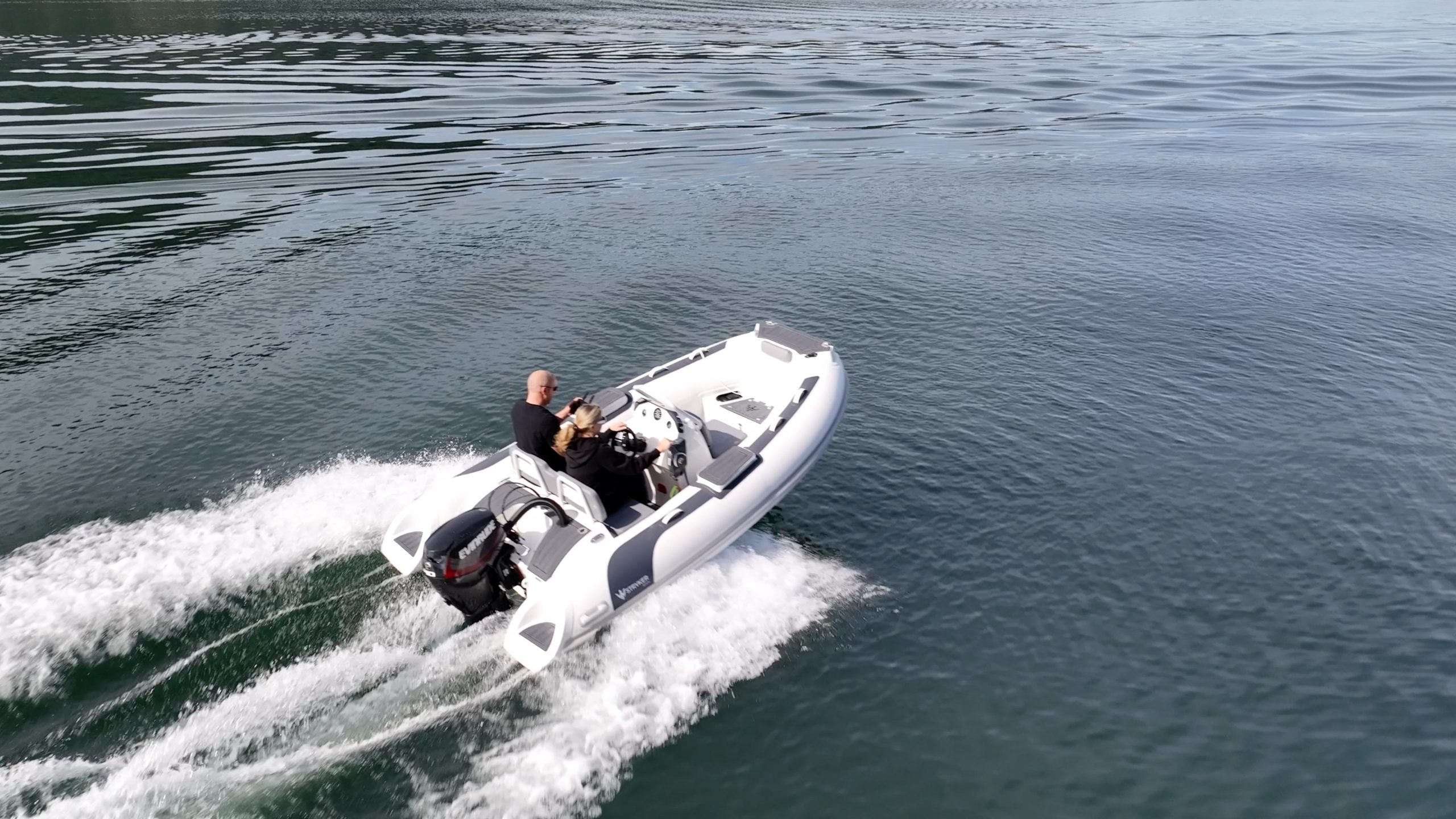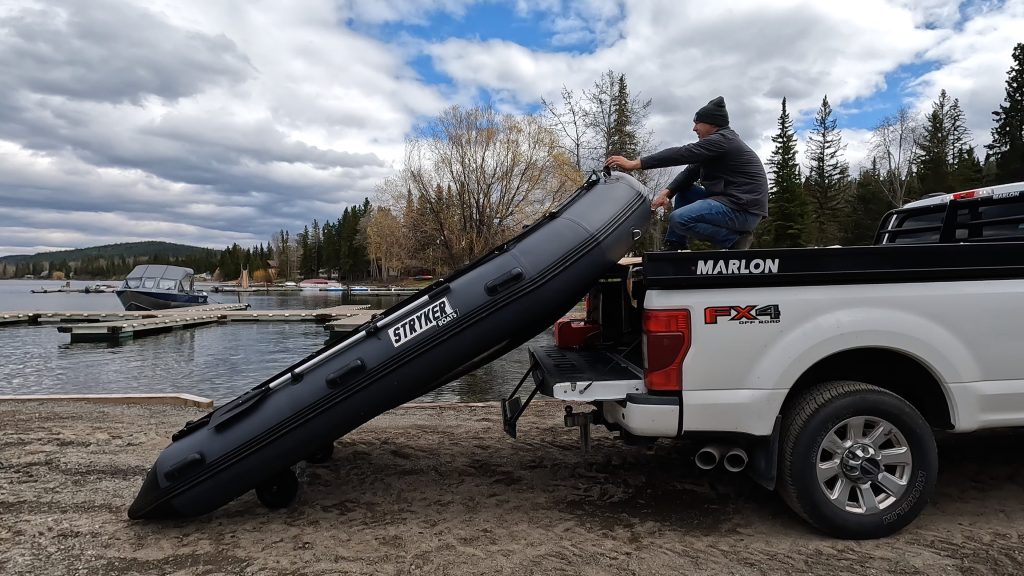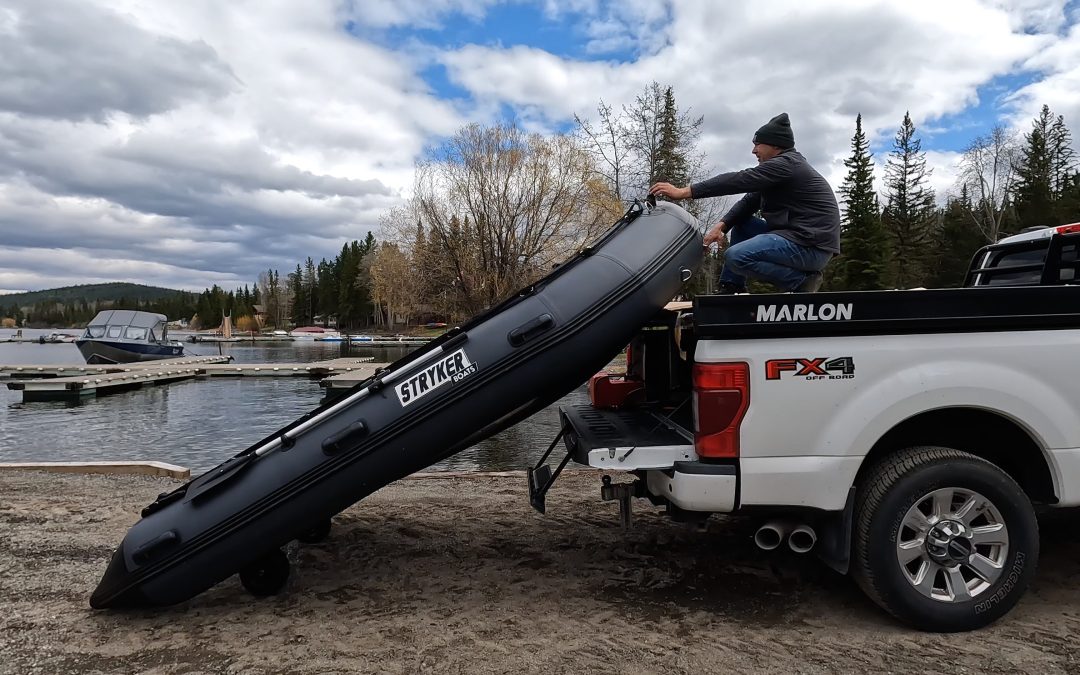Owning an inflatable boat offers numerous advantages, like portability, lightweight design, exceptional stability, and a high level of safety. These versatile boats can be used for various activities such as fishing, diving, exploration, or even as a tender for larger vessels. However, it’s essential to be aware that with frequent use (like many tools), inflatable boats may require repairs at some point.

Experiencing a deflated inflatable boat can be inconvenient, but there’s no need to worry! With a bit of knowledge and a few essential tools, you can quickly get back on the water.
In this article, we will explore the repair process for inflatable boats, providing valuable insights and practical guidance to help you salvage your day on the water.
Prioritize safety above all else.
Before starting any repair work, it is imperative to read the instructions provided on product labels carefully.
Awareness of the potential health risks associated with adhesives and solvents is crucial. These substances can emit harmful fumes when inhaled, absorbed through the skin or eyes, or accidentally ingested. Additionally, these fumes are highly flammable, emphasizing caution’s importance.
Your well-being should always come first, so taking appropriate measures to protect yourself from potential hazards is essential.
Create a suitable workspace for the repair
Creating the right working environment is crucial for successfully repairing inflatable boats. To achieve optimal results, strive to maintain the following ideal conditions:
- Relative humidity: Keep the relative humidity level below 60% to prevent moisture-related issues during the repair process.
- Temperature range: Ensure that the temperature falls between 18°C and 25°C. This temperature range provides the ideal conditions for working with adhesives and ensures proper curing.
- Work area: Select a work area that is dry, shaded, and well-ventilated. This helps prevent moisture accumulation and allows for proper air circulation, reducing the risk of adhesives not setting correctly.
- Fire safety: Avoid naked flames or uncovered heat sources in the vicinity. Inflatable materials and adhesives can be highly flammable, so it is crucial to eliminate potential fire hazards from your workspace.
By adhering to these guidelines, you can create an optimal workspace that promotes successful repairs and ensures the safety of both yourself and the inflatable boat.
Identify the material of your boat.
To effectively repair your inflatable boat, it is essential to understand its build. Before initiating any repairs, take the time to identify the material your inflatable boat is made from.
Hypalon, PVC, and polyurethane (PU) are commonly used in inflatable boat fabrication. Each material comes with its unique strengths and weaknesses. Here’s a brief overview of each:
- Hypalon: Boats made from this material feature a synthetic rubber coating on the fabric. It provides exceptional durability and can last up to 20 years. The joints of Hypalon boats are typically created by overlapping layers glued tightly together. Hypalon boats are commonly found in dark grey or black colors. Unfortunately Hypalon cannot be welded together and only glued.
- PVC: Such boats have a plastic coating and are the most cost-effective option for boat production. PVC boats are either welded or glued together, and they often have a glossy appearance.
- Polyurethane (PU): Polyurethane is a relatively newer material in inflatable boats. They offer superior glossy appearance compared to Hypalon and PVC.
Identifying your boat’s fabric is crucial because it determines the specific adhesive, solvent, and patch fabric required for the repair. Once you have recognized the type of material your inflatable boat is made from, you can proceed confidently, knowing that you are choosing the appropriate tools and materials for the repair job.

Identify the type of repair required
It is crucial for effectively resolving the issues you may encounter with your inflatable boat. Here are some problems you can face and their solutions:
- Punctures: Punctures are often caused by fish spines, with snapper being particularly notorious. You can use a patch kit specifically designed for your boat’s material to fix punctures. Clean and dry the affected area, apply adhesive, and affix the patch, ensuring a secure and airtight seal.
- Split seams: Overinflation can cause seams to give way. To prevent this, starting the day with a moderately inflated boat is recommended. If a seam has already split, it can be repaired using a suitable adhesive for your boat’s material. Apply the glue along the split seam, press the edges firmly, and allow it to cure according to the manufacturer’s instructions.
- Loose fittings: Handles and fittings can detach from the pontoons over time due to aging glue. Reattaching them is a common repair job. Clean the fitting and the boat surface thoroughly, apply a suitable adhesive, and firmly press the fitting. Allow sufficient curing time before using the boat.
- Sunlight degradation: Extended exposure to sunlight can cause fabric damage on inflatable boats. If your boat’s fabric has become porous due to UV degradation, you can use a spray-on product designed to address this issue. Follow the product instructions to apply the UV protection spray and restore the integrity of the fabric.
- Loose transom: Carrying a heavy outboard motor and general wear and tear can loosen the transom board from the pontoons. While repairing a loose transom can be complex, it is worthwhile for boats with several years of remaining life. Seek professional assistance or consult detailed repair guides to ensure a thorough and secure transom repair.
- Leaking floor: Leaks in air floors can be easily fixed. If the issue is merely wet feet, it can be addressed by drying and applying a sealant to the affected areas. Locating a leak can be challenging and time-consuming, but persistence is essential. Use soap water or a leak detection solution to identify the source of the leak, mark it, and apply a suitable patch or sealant to repair the floor.
By accurately identifying the type of repair required, you can apply the appropriate solutions to restore your inflatable boat to its optimal condition.
Finding a leak in an inflatable boat
Finding a leak can be challenging, especially when dealing with tiny punctures. While big tears are easy to find, many leaks are caused by small pinhole punctures that are not immediately visible.
One method to find a leak is using a mixture of liquid soap or all-purpose cleaner and water in a spray bottle. Here’s a step-by-step guide:
- Mix the solution: If using soap, mix it with water until it is thin enough to be sprayed. If you have an all-purpose spray cleaner, proceed to the next step.
- Spray the solution: Spray the solution around the suspected leak area, including the valves. Use your hand to spread the mixture and leave a thin layer.
- Identify leaks: Air escaping from the leak will cause bubbles in the soapy solution, indicating the leak’s location. Carefully observe and locate the source of the bubbles.
- Mark the leak: Once you find the leak, use a permanent marker to mark the area. This will make it easier to locate during the repair process.
- Test patch security: This method can also be used to test the safety of a previously applied patch. Look for any bubbles forming around the patch, which may indicate an issue with the repair.
- Rinse and dry: Once you have covered the entire area of the boat, rinse the surface with water and let it dry before proceeding with further repairs.
Remember to carry out necessary repairs on every part where leaks are found. By following these steps, you can efficiently find and mark leaks in your inflatable boat, enabling you to proceed with the appropriate repair process.
Discovering an underinflated air chamber while out on the water can cause concern. However, there’s no need to panic since most boats have multiple air chambers, ensuring that even if one leaks, the others remain unaffected.
If you can locate the leak above the waterline, you can perform a temporary fix using the following emergency steps:
- Clean the area: Wipe the affected area with a PVC cleaning solvent to ensure it is free from dirt or debris.
- Apply a temporary patch: Use either duct tape or a PVC patch to cover the leak. These items must be included in your emergency gear.
Ensure you have the following emergency gear on your inflatable boat: life jackets, cleaning solvent, duct tape, patch/patch kit, and hand pump.
If you find that the patches you apply don’t hold or if you’re experiencing frequent leaks, it may indicate that it’s time to consider purchasing a new boat. Although inflatable boats are generally durable and repairable, multiple patches can weaken the overall structure and lead to additional issues.
Repairing the air valve
If you suspect a leak in your boat’s air valve, there are steps you can take to fix it.
Follow these instructions for a successful repair:
- Check for air bubbles: Observe the soapy water around the valve area for any air bubbles. If you notice bubbles, it indicates a potential leak. First, attempt to tighten the valve using a valve wrench.
- Clean the valve: If tightening the valve doesn’t resolve the leak, it’s time to clean it. With the help of the valve wrench, remove the valve from the boat. Thoroughly wash the valve inside and out to remove dirt, sand, and grime that may obstruct an airtight seal. Pay close attention to the push pin area as well. Ensure the valve is completely clean before proceeding.
- Reinstall the valve: After cleaning, place the valve back into its original position on the boat. Make sure it is securely fitted. Check if the leak has stopped.
- Valve replacement: If tightening and cleaning the valve does not resolve the leak, it may be necessary to replace it entirely.
Replacing a valve requires specific environmental conditions to ensure a successful repair. The area where the valve will be replaced should be stress-free, with relative humidity below 60% and a temperature between 18°C and 25°C. Adequate ventilation is also essential.
Replacing the air valve
To replace a valve, follow these steps:
- Deflate the tube and remove the existing valve.
- Cut the fabric around the valve and remove the entire valve assembly.
- Attach the new valve to the assembly using a valve doubler.
- Position the assembled valve over the tube and mark its placement.
- Mask the surrounding area with removable masking tape to prevent excessive adhesive application.
- Abrade the back of the doubler for adhesive bonding, taking care not to damage the fabric.
- Clean the back of the patch with solvent and let it dry completely.
- Apply a thin coat of adhesive using a brush and allow it to dry for about 20 minutes.
- Place the patch and doubler onto the cut-out area, ensuring a smooth and bubble-free application.
- Remove the masking tape, excess solvent, and adhesive. Apply a weighted object over the patch for 24 hours to ensure proper bonding.
Following these steps, you can effectively repair or replace the valve in your inflatable boat, restoring its airtight integrity and ensuring its continued usability.
Materials and tools needed for the repair process.
To successfully repair your inflatable boat, it’s important to gather the necessary materials and tools. Here’s a comprehensive list of what you’ll need:
- Suitable 2-pot glue
- Suitable solvent
- Mask: Ensure you have a mask to protect yourself from fumes.
- Gloves
- Masking Tape
- Rag
- Brush
- Ruler
- Knife
- Roller or other tool
- Water-soluble pencil
- Heat Gun
- Repair fabric
- Piece of polythene
- Sandpaper
- Mixing stick
- Short/stiff paint or glue brush
- Removable marker pen or pencil
- Masking tape
- Seam roller or rounded object
- Heavy weight

By having these materials and tools ready, you’ll be well-prepared to carry out the necessary repairs on your inflatable boat.
While DIY repairs can be effective, it’s important to note that professional inspections and maintenance play a vital role in ensuring the long-term functionality of your inflatable boat. So, don’t think twice, bring your boats to us.
The International Maritime Organization (IMO) mandates that all inflatable boats should undergo inspections every five years by certified manufacturers or service providers. This helps guarantee the boat’s safety and seaworthiness for an extended period.
Repairing and maintaining inflatable boats can be a manageable task. If you discover a leak in your inflatable or any other part of the boat, there’s no need to panic. By following proper repair procedures and taking the time to prepare the boat and patch correctly, you can restore your inflatable boat to its original condition.
Safety and repair are two sides of the same coin. Learn more about how you can stay safe on an inflatable boat.


Recent Comments